Rebirth Of Classic Ultralight, But With A New Twist
by ANN Correspondent Scott Wagner
Back in 1982, Bill Sadler won the Grand Champion Ultralight
award at Oshkosh with his single seat Vampire ultralight.
Reminiscent of its mid-20th century jet-fighter namesake, the
deHavilland Vampire, the ultralight was a mid-wing, twin tailboom
pusher. Around 30 were built in the United States, and the design
was also licensed to an Australian Company. The stateside operation
closed up shop due to slow sales, and the Australian shop went Down
Under shortly after.
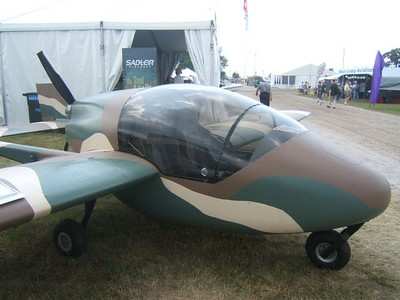
Fast forward 15 years, when Sadler designed a beefed up version
to serve as an attack and surveillance plane for the Turkish
military. Dubbed the Piranha, the design was scrapped when the
Turks eliminated pretty much everything except their F-16 program.
The Piranha was armed with a 30mm cannon, with two hardpoints
available to mount up to 1000 pounds of rockets or small bombs.
Power was from a 450-horsepower engine, and the plane had
retractable gear.
Around this time last year, Sadler began looking into bringing a
modified version of the Piranha to the LSA dance. By
lengthening the wing, welding the gear in the down position, making
some minor changes to the cockpit pod, and scaling WAAAAY back on
the power, Sadler was able to bring the Piranha into LSA
compliance. Harkening back to his ultralight days, the new bird has
been dubbed the Sadler Vampire LSA.
With its 50" cabin, the Vampire can accommodate pilots up to
6'7". Production aircraft will incorporate gullwing canopy doors,
as opposed to the prototype's removable bubble, allowing for easy
entrance. "It has excellent visibility... it's like a helicopter in
that regard. Cabin noise is very low, due to the pusher
configuration." said Sadler.
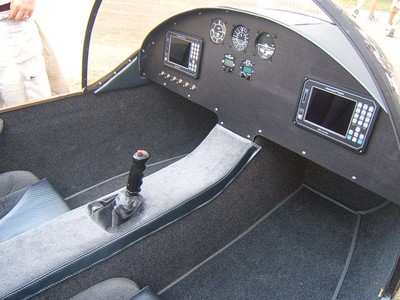
'What I was attracted to was the robust structure. It's really
strong. The wing is stressed to 6 G's. It's a really a solid plane.
A lot of LSAs feel like beefed up ultralights. This is a real
airplane that meets LSA standards." said company Vice President
David Littlejohn.
In the performance department, the Vampire LSA is pushed along
by the 100 HP Rotax 912, burning five gallons per hour at 75%
power. With an empty weight of around 700 pounds, that leaves
roughly 600 pounds for crew, fuel and baggage. Full fuel payload
with the standard 20 gallon tank would be roughly 500 pounds, and
with an optional second tank, around 380 pounds. One possibility
for baggage transportation is a tube inserted in the wing, which
would be large enough to haul a set of golf clubs. Maximum speed is
expected to be 120 knots, or 110 knots at 75% power. Climbout is
estimated at 800 feet per minute, with takeoff and landing over a
50 foot obstacle possible from a 1500 foot strip.
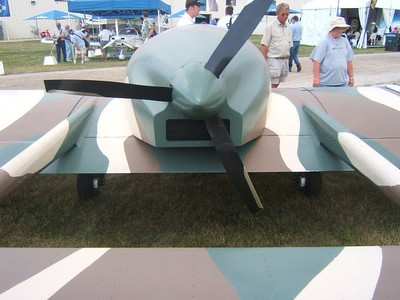
One interesting design feature is the Vampire's folding wing.
Hinged in two places, the wing can be folded by one person. Set up
and break down takes a mere 10 minutes, and the folded-up airframe
measures a mere 8' by 8', with a nose to tail length of 18 feet.
Therefore, the Vampire can easily be stored in a 1 car garage, and
driven to the airport on a trailer.
Initially, Sadler plans to bring the Vampire LSA to market as an
S-LSA, but is open to the idea of producing a kit in the future.
The company, Sadler Aircraft, hopes to have the airplane certified
to ASTM standards by the end of 2007, with deliveries commencing by
the end of 2008. Sadler Aircraft is looking at a number of
manufacturing facilities in the Roseburg, OR.
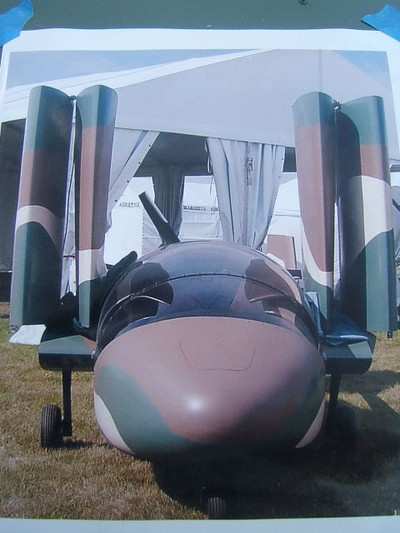
Thanks to the folding wing, Sadler says, the company isn't
limited to on-airport production facilities. They can set up shop
anywhere that makes good business sense, and move the completed
product to the airport for flight testing.
Sadler is shooting for an $85,000 pricetag for the base model.
With its huge instrument panel and the engine in the back, the
Vampire airframe allows for any number of avionics upgrades. No
details are available on upgrade packages, because the development
program is still relatively new. Other planned options include the
second fuel tank, and the buyers choice of a side stick mounted
between the seats or more conventional dual control sticks.
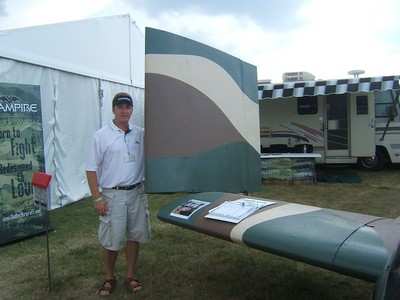
The company is accepting deposits, which are held in third party
escrow. Therefore, deposit money is not -- and cannot be -- used as
operating capitol for the company. Potential buyers can opt out at
any time.
 ANN's Daily Aero-Term (10.14.25): Severe Icing
ANN's Daily Aero-Term (10.14.25): Severe Icing Aero-News: Quote of the Day (10.14.25)
Aero-News: Quote of the Day (10.14.25) ANN's Daily Aero-Linx (10.14.25)
ANN's Daily Aero-Linx (10.14.25) Classic Aero-TV: Curtiss Jenny Build Wows AirVenture Crowds
Classic Aero-TV: Curtiss Jenny Build Wows AirVenture Crowds True Blue Power and Mid-Continent Instruments and Avionics Power NBAA25 Coverage
True Blue Power and Mid-Continent Instruments and Avionics Power NBAA25 Coverage







